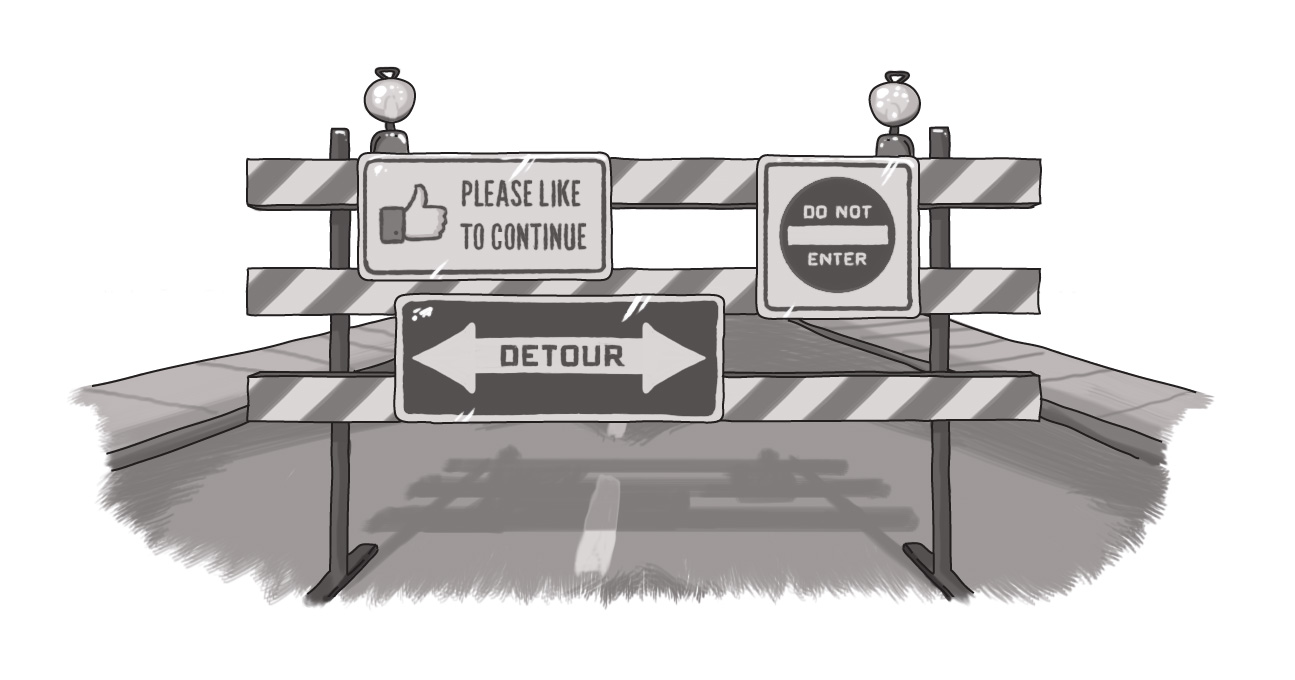Avoiding Bumps in the Road - Communicating Change

There's an old jocular adage that those of us who have lived for any amount of time in Montreal hold close to our hearts: "There are two seasons in Montreal: winter and construction season." Now, it's clearly a bit of gallows humour. After all, summer in Montreal may be the most beautiful thing in this world.
But you've got to find your way there. And it's not always easy.
Especially this year. Apparently, for its 375th anniversary, my hometown has decided that it's going to celebrate with a construction-fest of the ages. The city is changing, updating, and renovating itself all throughout the island.
Change oftentimes is disruptive, uncomfortable, and inconvenient. It's going to make a lot of people angry, it's going to cause mass frustration, but -- if communicated correctly and with a clear purpose -- the end result can be worth the headache.
Having just returned from a week-long adventure back in Montreal (and dealing with Montreal traffic rerouting), I thought I'd share some traffic-based observations that directly correlate to change communications strategies.
Start with the Benefits
The most important question to answer with any major undertaking that's going to impact users is, as usual, "What's in it for me?"
If there's a clear benefit with tangible results at the end that will benefit the end user, they'll put up with a lot of inconvenience. However, if your rhetoric remains vague, talking only about "improvements" or alluding to a "vision of the future," then you're in trouble. What's happens when a "vision" is unclear or doesn't align with what the majority feels is a benefit? Google the implosion of Vision Montreal for an example.
But if you're clear in your communication about the very real benefits that your change is going to bring. If you talk about tangible results, improvements to day-to-day life, and actual verifiable return on investment, people will get on board. If there's a clear need (say, "If we don't fix this overpass, which is overdue for repair by 20 years, it may fall down on you") people will understand and support the decision.
Communicate Clearly
Clear communication is not always easy in one language. And that task is amplified when you're dealing with a bilingual city. Whether your target is behind the wheel, sitting at a computer, or starting into their phone, you have a limited window of time to convey your message.
Quick, clean, clear -- the hallmarks of effective communication. Don't get too wordy, don't add in non-essentials, just get straight to the point.
Images can also cut through a lot of the clutter. Adding clear visuals that effectively illustrate the point you're trying to make can help. A picture can be worth a thousand words, as you know -- but if you choose the wrong image, you might be sending the wrong message.
Give Advance Notice
Really, this is true on so many levels. From the buy-in period to the execution of the change, ensuring that your target has adequate notice and time to plan for next steps can have a dramatic impact on the end user's level of satisfaction.
When first considering change, it's important to ensure that all the key stakeholders have had a fair opportunity to provide meaningful feedback. After all, the change is going to impact them, so you want to ensure it has value to them. What's the best way to do that? Don't assume you know what's best -- ask the end user directly what they want and need. That type of honest, valued input can increase buy-in from your key stakeholders.
And once you're in the midst of change, make sure you keep updating people throughout the process. There's an axiom that I've held onto for a couple of decades now -- because it still proves to be true: when things are good, communicate well; when things are not so good, communicate three times as often.
Change can be uncomfortable. But if the change is built upon a foundation of inclusion, information, and fact, you're generally going to be making the right decision. However, that decision can have negative impacts -- short and long-term -- on certain stakeholders. In the absence of information, fear, misinformation, and speculation quickly fill the void.
So what do you do? Be as open and honest as you can. As frequently as you can. Tell them the truth. Tell them everything you can. And if there are certain things you can't tell the end user, tell them why you can't (for example, legal issues, negotiations, etc.)
And don't wait until the last minute. I know my way around Montreal pretty well and I enjoy driving around that city. But I may or may not have found myself en route to the south shore after missing a detour that wasn't announced until the last minute and wasn't clearly marked in advance. Had I been given better advance notice, I could have adjusted.
On the positive side, that drive across the Champlain Bridge is always lovely.
A Smooth Ride
So whether it's internal or external communications; whether you're adjusting pricing for your products, changing your corporate direction, or tearing up half the city's streets, clear and effective communication -- early and often -- will always help to smooth out the bumps along the road and make your target audience happier and more tolerant of change.
How do I communicate change effectively?
SUBSCRIBE TO OUR E-NEWSLETTER
 Subscribe
Subscribe


